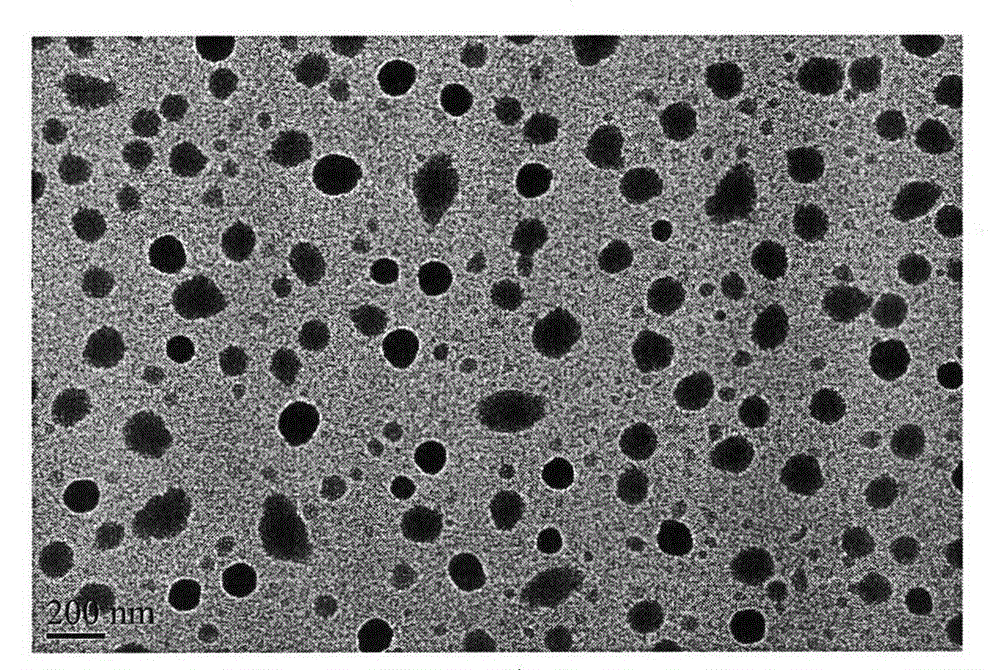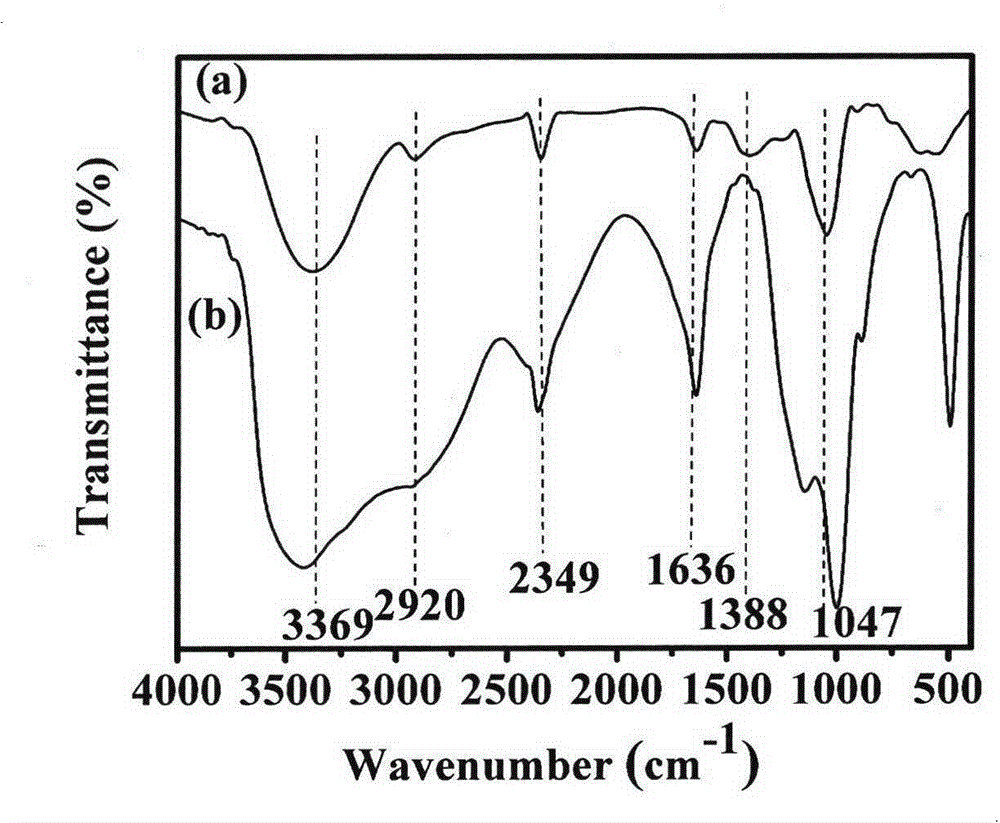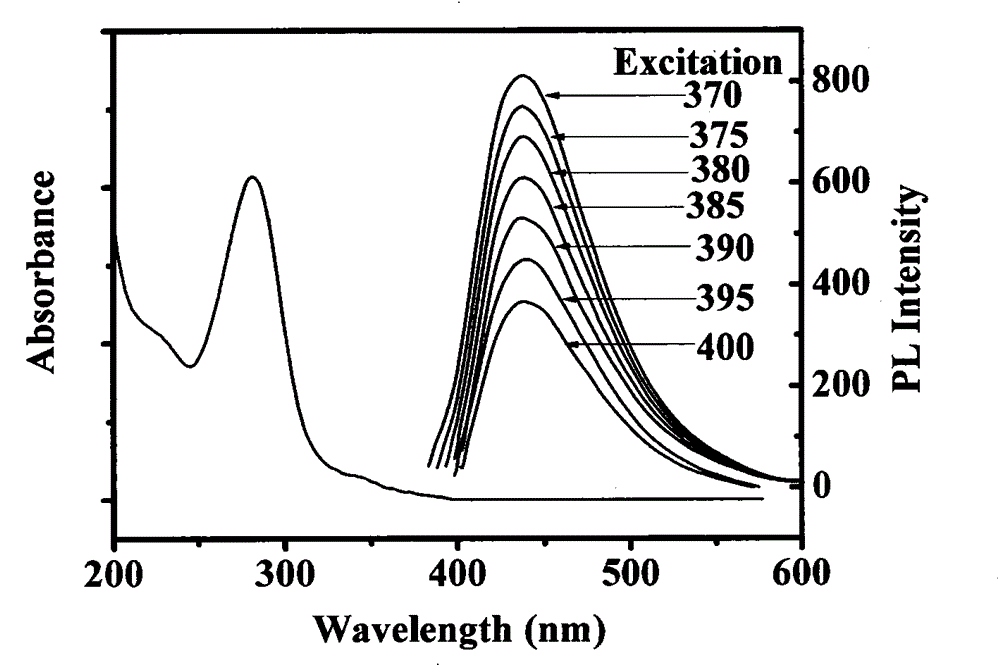New preparation method of fluorescent carbon nanoparticles and application in biological samples
A carbon nanoparticle and new method technology, applied in nanotechnology, fluorescence/phosphorescence, chemical instruments and methods, etc., can solve the problems of cumbersome operation, low yield, unstable fluorescence emission wavelength, etc., and achieve broad application prospects and cost. Low, the effect of improving processing efficiency
- Summary
- Abstract
- Description
- Claims
- Application Information
AI Technical Summary
Problems solved by technology
Method used
Image
Examples
example 1
[0024] The preparation of fluorescent carbon nanoparticles of the present invention is as follows:
[0025] (1) Preparation of sugar solution: Weigh 0.5 g of glucose and add it to 2 mL of deionized water, and mix it ultrasonically for 10 minutes to form a uniform and transparent sugar solution;
[0026] (2) Preparation of fluorescent carbon nanoparticles: the sugar solution obtained in step (1) is added to a container containing 2.5 grams of P 2 o 5 In a small beaker, the mixture reacted rapidly, spontaneously exothermic to generate a large amount of foam, the volume of the solution expanded, and the color turned brownish black, and the mixture gradually cooled to room temperature after 10 minutes;
[0027] (3) Purification of fluorescent carbon nanoparticles: Pour the brown-black mixture obtained in step (2) into an appropriate amount of water, stir and mix, ultrasonicate for 10 minutes, then centrifuge the mixture at 13000rmp for 30 minutes, collect the supernatant, and pla...
example 2
[0029] (1) Preparation of sugar solution: Weigh 0.5 g of sucrose and add it to 2 mL of deionized water, and mix it ultrasonically for 10 minutes to form a uniform and transparent sugar solution;
[0030] (2) Preparation of fluorescent carbon nanoparticles: heat the sugar solution obtained in step (1) to 80°C, add 2 o 3 In a small beaker, the mixture reacted rapidly, spontaneously exothermic to generate a large amount of foam, the volume of the solution expanded, and the color turned brownish black, and the mixture gradually cooled to room temperature after 10 minutes;
[0031] (3) Purification of fluorescent carbon nanoparticles: Pour the brown-black mixture obtained in step (2) into an appropriate amount of water, stir and mix, ultrasonicate for 10 minutes, then centrifuge the mixture at 13000rmp for 30 minutes, collect the supernatant, and place it in a dialysis bag for use. Ionized water was dialyzed to remove residual sugar and ions. Finally, the fluorescent carbon nanopa...
example 3
[0035] Fluorescent carbon nanoparticles for the detection of quercetin in urine
[0036] 1.5 mL of urine from healthy volunteers was spiked with quercetin standard solution, and then diluted to 100 μg / ml. Add 330 μL of fluorescent carbon nanoparticles into a 5 mL volumetric flask, add 100 μL of spiked urine, dilute to the mark with 0.01 M phosphate buffer solution, pH 6.0, mix and sonicate. After ultrasonication for 22 min, a fluorescence spectrophotometer was used for spectral analysis, the excitation wavelength was 370 nm, the excitation and emission slit widths were both 5 nm, and the fluorescence emission spectrum was scanned in the range of 300-700 nm. Determine the concentration of quercetin in the sample solution, and calculate the amount of quercetin in the solution. Correspondingly, a control group experiment without spike in urine was also determined together. Experiments show that carbon nanoparticles have good dispersion performance in urine of biological samples...
PUM
 Login to View More
Login to View More Abstract
Description
Claims
Application Information
 Login to View More
Login to View More - R&D
- Intellectual Property
- Life Sciences
- Materials
- Tech Scout
- Unparalleled Data Quality
- Higher Quality Content
- 60% Fewer Hallucinations
Browse by: Latest US Patents, China's latest patents, Technical Efficacy Thesaurus, Application Domain, Technology Topic, Popular Technical Reports.
© 2025 PatSnap. All rights reserved.Legal|Privacy policy|Modern Slavery Act Transparency Statement|Sitemap|About US| Contact US: help@patsnap.com



